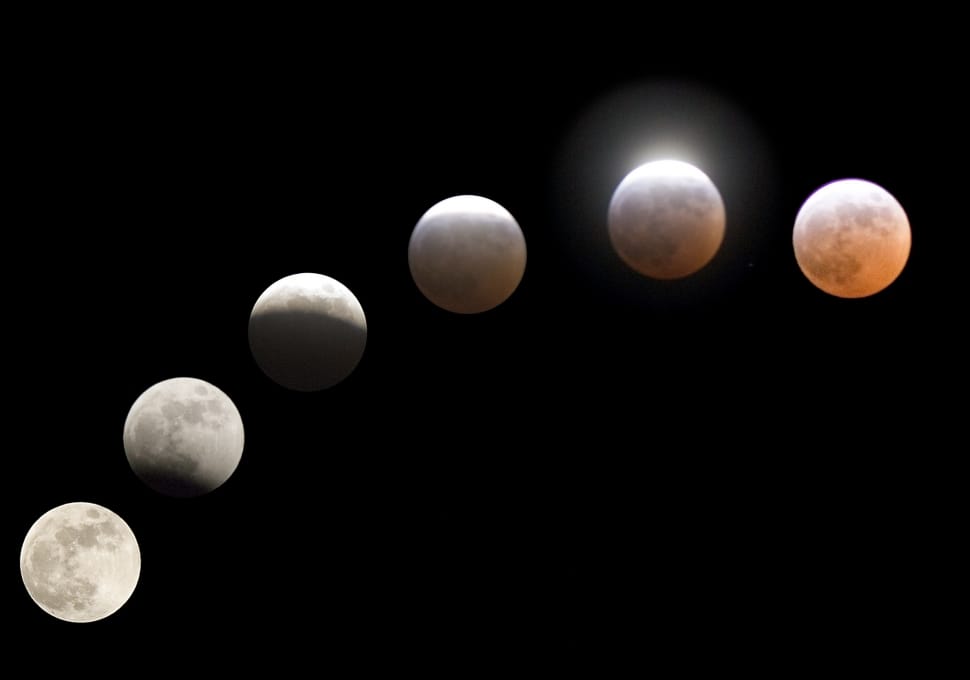Since the beginning of human civilization, people have been fascinated with the moon. Its hypnotic stages, from the waning crescent to the radiant full moon, have always been a source of awe and inspiration for deep thought. The moon in its full phase is undoubtedly the most entrancing of these phases since it bathes the Earth in a brilliant radiance and evokes vivid imagery in those who behold it. But exactly how many different phases does a full moon go through? In the following paragraphs, we will investigate the numerous steps that culminate in a full moon as well as the heavenly dance that is responsible for bringing about this wondrous sight.
A Look at the Moon’s Changing Phases
The phases of the moon are caused by the moon’s orbit around the Earth and how the moon, Earth, and sun are positioned in relation to one another. As the moon completes one orbit around the Earth, different sections of the illuminated side of the moon will be seen from our vantage point on Earth. The duration of this event, which is referred to as the lunar cycle or lunation, is around 29.5 days.
- The New Moon: The lunar cycle starts with the new moon, which occurs when the moon is in its most distant position from the Earth and closest to the sun. When the moon is in this position, the face of the moon that is facing us is in the shadows, and we cannot see the moon with the naked eye. Even though the new moon is not strictly considered to be a stage of the full moon, it is nonetheless considered to be an important part of the lunar cycle since it marks the beginning of the cycle and prepares the way for the subsequent stages.
- The Waxing Crescent: This phase of the moon’s orbit is characterized by the gradual appearance of a slender crescent of light as seen from Earth. The term “waxing crescent” refers to this stage of the moon’s cycle. The portion of the moon that is illuminated during this phase grows gradually larger, allowing it to display an increasingly stunning aspect of its natural splendor with each passing night.
- First Quarter: The first quarter of the moon occurs when half of its surface is illuminated, giving it the appearance that it has been cut in half. This phenomenon is known as the “slice of the moon.” The first quarter of the moon occurs exactly in the middle of the transition from the new moon to the full moon.
- Waxing Gibbous: When the moon has completed its first quarter cycle, it will move into the waxing gibbous phase. Even though more than half of the moon is visible during this phase, the moon is not yet considered to be at its full phase. The moon is getting bigger and brighter as it progresses through its phase of waxing.
- The Full Moon: After a little over two weeks have passed since the beginning of the lunar cycle, the moon has now arrived at the full moon phase. This happens when the moon is on the opposite side of the Earth from the sun, and the sun’s rays illuminate the moon completely on all sides. The sight of the moon at full phase is very breathtaking, as it casts a luminous glow throughout the night sky.
- Waning Gibbous: After the full moon has passed, the moon will start to become less visible in the sky. When the moon is in the waning gibbous phase, more than half of its surface is still lighted, but the light output is significantly less than what it is during the full moon phase.
- Third Quarter: As the moon continues its orbit around Earth, it eventually reaches the third quarter, which is diametrically opposed to the first quarter. However, this time only the left half of the moon’s surface is visible from Earth’s perspective.
- Waning Crescent: The waning crescent phase is the final stage before the new moon phase begins. At this point, the only part of the moon that can be seen from Earth is a slender crescent since the amount of its surface that is lit continues to decrease.
Conclusion
People from all different cultures and eras are mesmerized by the full moon because it is the most magnificent of the moon’s phases. The phases of the moon, both before and after the full moon, form a celestial ballet that brightens our night skies and influences our lives in a variety of different ways. These phases occur before, during, and after the full moon. By gaining an appreciation for the complexities of the lunar cycle and the wondrous things our world has to offer, we can do so by being familiar with the various phases that a full moon goes through. When you next look up at the moon when it is full, think about the long path it travelled to get to its current state of dazzling brilliance.
![]()
